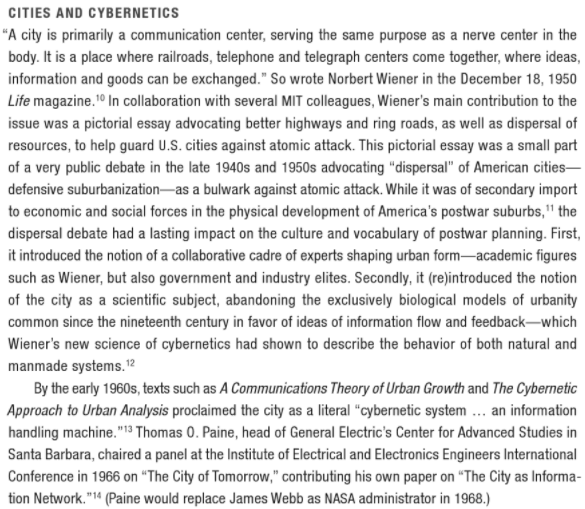All’interno dei percorsi che parlano di urbanistica digitale, includo spesso una pubblicazione apparentemente anomala, un libro di Nicholas de Monchaux in cui si parla delle tecnologie utilizzate per l’ingegnerizzazione delle tute spaziali durante la missione Apollo.
Nicholas de Monchaux
Spacesuits: Fashioning Apollo
MIT Press
Nicholas de Monchaux insegna al MIT dove è responsabile dell’architettura, è partner dello studio di architettura modem e fondatore della società di tecnologia del design Local Software, professore di architettura e design urbano, e Craigslist Distinguished Chair in New Media alla UC Berkeley, dove è stato anche direttore del Berkeley Center for New Media. Con i suoi lavori di progettazione ha partecipato alla Biennale delle Americhe, alla Biennale di Architettura di Venezia, alla Triennale di Architettura di Lisbona, al SFMOMA, allo Yerba Buena Center for the Arts, allo Storefront for Art and Architecture e al Museum of Contemporary Art di Chicago. È Fellow dell’Accademia Americana di Roma.
Il suo libro è “una storia architettonica e urbana” delle tute Apollo Spacesuit, ha vinto il premio Eugene Emme dell’American Astronautical Society ed è stato selezionato per l’Art Book Prize.

Nel 1968, l’allora vicepresidente degli Stati Uniti H.H. Humphrey nel tentativo di giustificare il denaro speso dall’amministrazione per la ricerca spaziale dichiarava:
«Le tecniche che porteranno l’uomo sulla Luna
saranno le stesse
di cui avremo bisogno
per ripulire le nostre città».

Le dinamiche che riguardano i tentativi di applicazione delle ricerche spaziali ad altri ambiti, sono oggetto del capitolo 19 del libro, intitolato “Cities and Cyborgs”. Ne ho scritto un pochino più nel dettaglio qui.
Per approfondire, dello stesso autore consiglio questo articolo, dal titolo “Space Suit And the City”.







No Comments